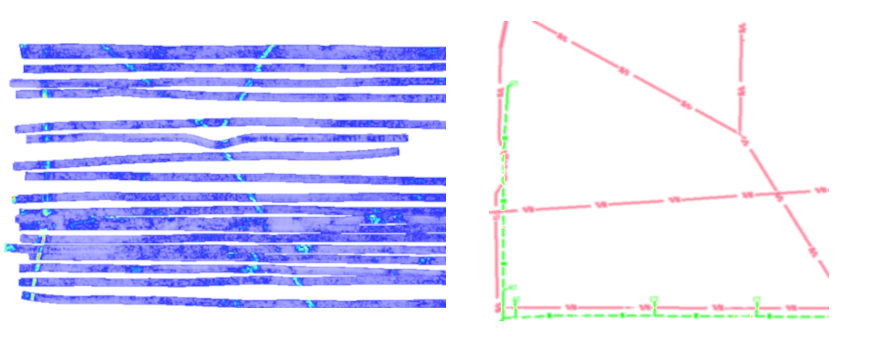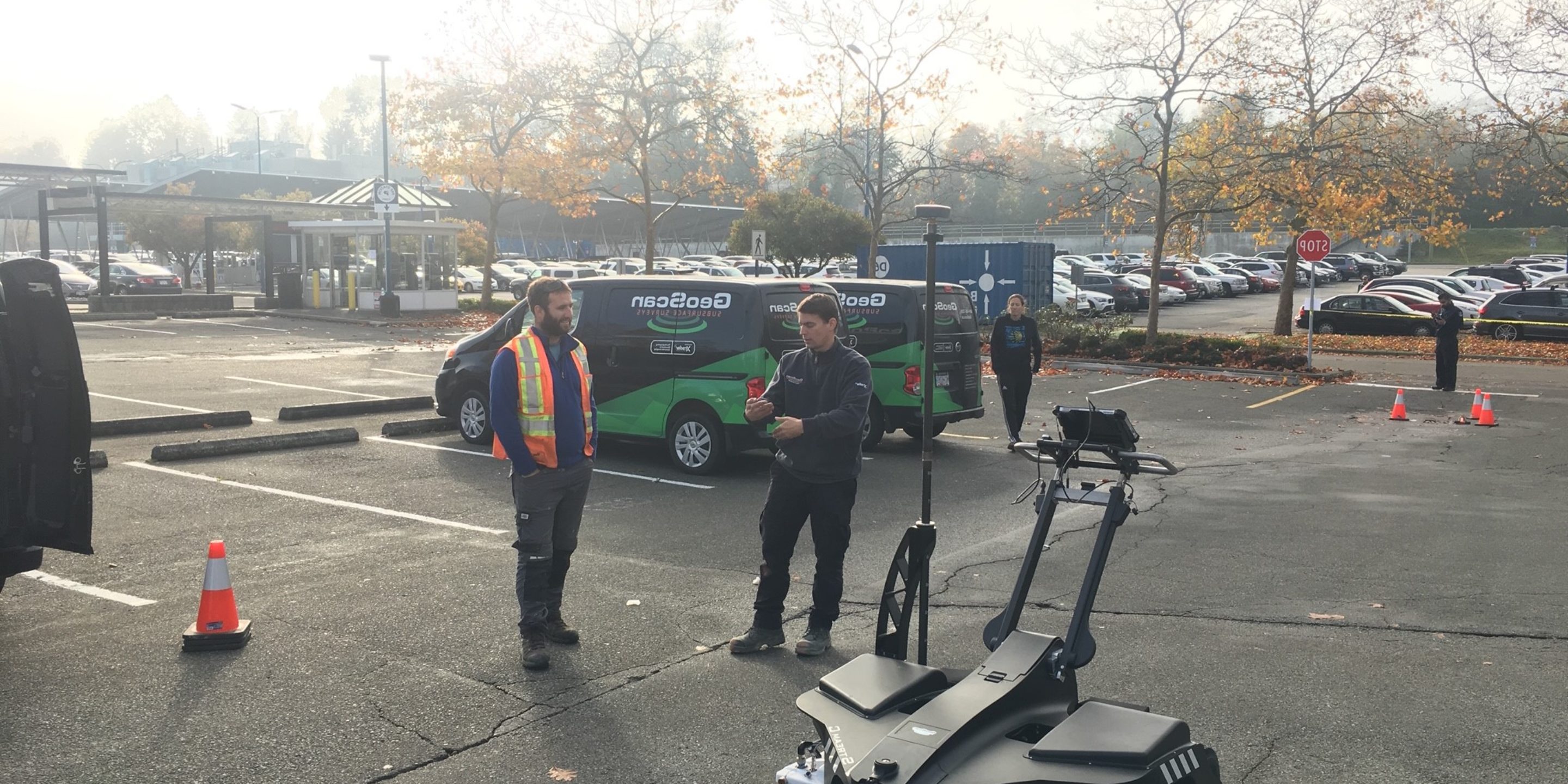You can use multi channel GPR for several project types; locating bedrock, mapping stratigraphy, locating USTs and for archaeological surveys
Also, for utility locates when a simple ‘GPR sweep’ is required
A GPR sweep is a method relying solely on GPR data to mark out utilities. We systematically collect multiple lines across a site, analyze and report back the findings to the client.
This method is fast and so limits the time required onsite and subsequently the disruption to a construction project. However, when it comes to a complete utility locate, where the accuracy of each utility is crucial, relying on multi channel array GPR alone is in itself, limited. To demonstrate and test the benefit and drawbacks of the method we have utilized both our standard utility locating process and array sweeping in a controlled manner.
When comparing the two methodologies, the following summarizes the limitations of the GPR array sweep:
- Physical limitations, which include:
- Limited access: near curbs, on sidewalks, around existing lights, manholes, and inside of buildings
- Analytical limitations:
- Limited depth penetration: multi channel GPR systems typically use a mid-range frequency for the GPR antennae, limiting the signal penetration significantly. An example is the Stream C by IDS, which uses a central frequency of 600MHz, limiting the depth penetration to an approximate 0.8m below the surface. Deeper targets can easily be missed especially if the soil conditions are not ideal.
- Missed utilities: utilities existing outside of the sweep area can be missed entirely. This can happen if parallel lines are collected without any overlap between them.
- Confusion: When utilities are interpreted and picked offsite in the office, the context is often unclear, creating confusion regarding the true nature of identified targets. This can be eliminated by a professional locator, who takes the site conditions into account, at the time of the survey, onsite, utilizing various methods to identify buried lines and is able to trace the utilities to their termination point to complete the locate.

The example above clearly shows some of the limitations of the GPR array sweep. The left side is a depth slice snapshot of the array data and the right side is the utility locator’s report from the same site. The site located in a parking lot in Burnaby, surrounding with sidewalks, curbs and buildings. The GPR array sweep has clearly missed a couple of lines at the bottom of the survey area, where the utilities are located near a curb, nor did it locate a deep sanitary sewer cutting across the parking lot in an east-west orientation as can be seen in our locators report. It should be noted, that the depth slice does not represent the entire data set, however, scrolling through the whole depth window of the array data, no additional utilities other than those shown in the image on the left, were located.
The speed of the data collection on site is definitely in favor of multi channel GPR systems. The data is collected using a vehicle, which is mounted to a car or van, or pushed manually as a large ‘lawn mower’ system, using survey grade GPS.
When it comes to survey completion, it won’t come as a big surprise that locating utilities on site by a highly trained and registered utility locator is actually faster when you consider the turnaround of the multi channel GPR interpretation. Nevertheless, our range of equipment, unique training and licensed technicians offer the best solution for every scenario when it comes to see what’s lurking below.
7-10% of all utility lines located were originally unknown, with no record of them existing
This incredible stat helps to understand the importance of risk mitigation in this industry. Up to 10% of utility lines not only have inaccurate locations, but are completely undetected in historical documentation.
If you are interested in knowing more about any of our services then please get in touch with our trained technicians here.
